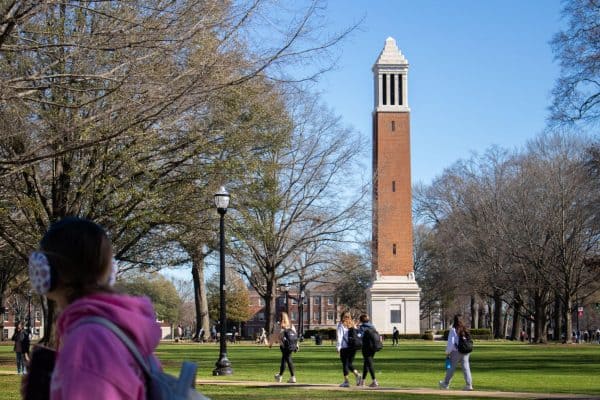Opinion | Making study abroad accessible for in-state students
September 18, 2022
Studying abroad is one of the most exciting and adventurous things a college student can do. In fact, it’s highly encouraged at The University of Alabama.
The Education Abroad office, located within the Capstone International Center, hosts a variety of information sessions and fairs on how to plan, apply and most importantly, budget for a summer or semester abroad. The office provides an abundance of resources and assistance to students seeking to study abroad through their team of advisors and directors.
Despite the great team in the office, there are inequalities in how in-state and out-of-state student scholarships are distributed.
The Education Abroad office facilitates four-types of study abroad programs: UA Faculty-Led, UA Exchange, UA Affiliate and Direct Enroll, and Non-UA Affiliate programs. UA Affiliate programs “allow students to enroll in a partner university or program through a third-party provider.”
These UA Affiliate programs include some of the most well-known companies for studying abroad, like American Institute for Foreign Study, Council on International Education Exchange, Center for International Studies Abroad and Semester at Sea.
UA Affiliate programs stand out because of the diverse range of over 40 countries, universities and academic programs they offer compared to other programs. UA Exchange and UA Faculty-Led Programs offer less on-demand opportunities and are more restrictive.
According to data provided by the Education Abroad office, during the 2019-2020 and 2020-2021 academic year study abroad snapshots, the most popular program type for UA students was the UA Affiliate programs. All other years with collected data, beginning in the 2014-2015 school year, the UA Affiliate program fell behind UA Faculty-Led Programs, making it the second-most popular choice.
The Education Abroad office notes on their website that, for UA Affiliate programs, “students are billed by the program provider or the host institution and pay fees directly to the provider; students will not pay UA tuition to The University of Alabama.” This is where the problem begins for in-state students.
Students are able to use scholarships to cover the cost of studying abroad by filling out a request form on myBama. These scholarships can range from National Merit and presidential scholarships to scholarships from other departments, offices and organizations.
This can make studying abroad the same cost as, or even cheaper than, studying in Tuscaloosa. In fact, the Capstone International Center advertises study abroad programs as potentially cheaper than staying in Tuscaloosa, incentivizing more students to apply.
Semester-length programs through one of the University’s many Affiliates range from around $10,000 to over $40,000 per semester, depending on the affiliate, program and selected country.
The high sticker price makes studying through a UA Affiliate program easier for out-of-state students who have full-tuition scholarships, rather than in-state students with the same scholarship classification and receive less money as a result.
As out-of-state tuition is higher than in-state tuition, out-of-state students have a larger amount of scholarship money to spend on study abroad programs. This leaves in-state students with fewer financially-viable options, according to the data reported by Education Abroad.
Only 28% of study abroad participants during the 2018-2019 school year were Alabama residents. This number decreased to 21% for the 2019-2020 school year before increasing to 27% for the 2020-2021 school year. Comparatively, 42% of students are in-state.
UA Exchange and UA Faculty-Led programs are the smartest options for in-state students because tuition is paid to the University at the traditional rate. All other costs and fees are paid to the host institution. However, these program types, while still spectacular, do not give in-state students as many on-demand options.
This reality is of no fault of the Education Abroad office, but it simply highlights a way in which in-state students are not necessarily prioritized when it comes to academic and extracurricular opportunities at Alabama.
When out-of-state students have the luxury to study abroad with their scholarship funds, they have more access to diverse perspectives and experiential education opportunities. Unequal access means the students who fund Alabama’s education system reap less of the benefits.
Although the value of in-state scholarships may be lower, it should not impact the ability of Alabama students to study abroad in their country of choice. All UA students should be able to study wherever they wish without having to worry about their finances, especially in-state students.











